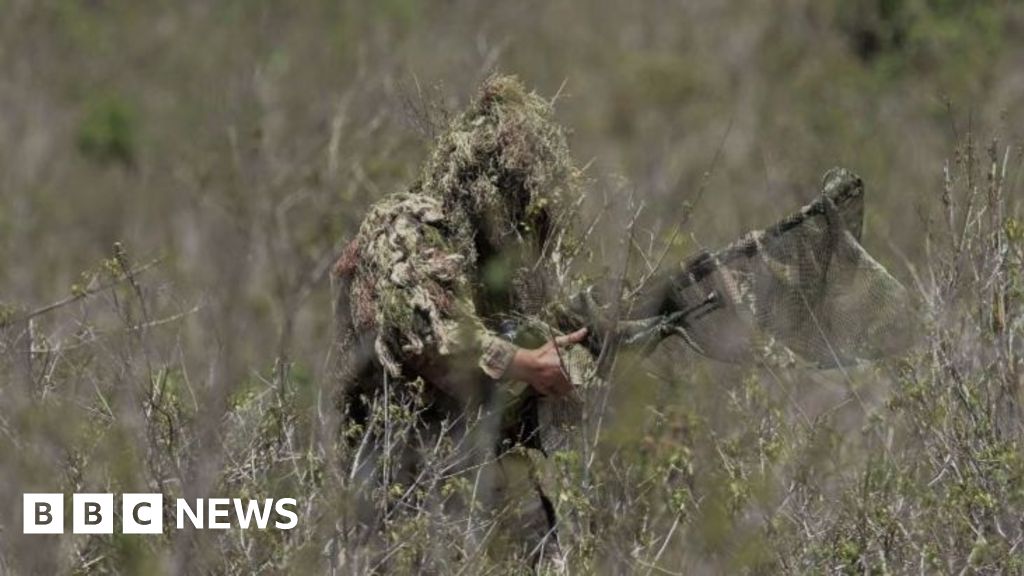In November 2022, several scientists in scuba gear dove over the side of a 440-foot research ship, which had been sent to the Saya de Mahla Bank, a vast seagrass meadow in the Indian Ocean between Mauritius and Seychelles, more than 200 miles from land. Their goal that day was to film sharks. When they were not diving, the scientists submerged a remote-controlled submarine to search the sea column. Ranked as one of the largest and most advanced research vessels in the world, the ship had been sent to this remote stretch by the environmental non-profit, Monaco Explorations, to document a seafloor famously lush in seagrass, corals, turtles, dugongs, rays, and other species.
During the three weeks that the research team combed the waters of the Saya de Mahla Bank, they spotted not a single shark.

The likely culprit, according to the scientists, was a fleet of more than 200 fishing ships that has, in recent years, targeted these remote waters, mostly from Taiwan, Sri Lanka, and Thailand. Many of these ships fish for tuna species such as albacore, yellowfin, skipjack, and bigeye, but they are also catching sharks in huge numbers.
Sharks play a critical role in the ecosystem as guardians of the seagrass, hunting populations of turtles and other animals that would mow down all the seagrass if left unchecked. Catching sharks is not easy, nor is it usually inadvertent. In tuna longlining, the ship uses a line made of thick microfilament, with baited hooks attached at intervals. Many tuna longliners directly target sharks by using special steel leads designed not to break when the sharks, bigger and stronger than the tuna, try to yank themselves free.
Read moreClimate change draws great white sharks north
To avoid wasting space in the ship hold, deckhands usually throw the rest of the shark back into the water after they cut off the fins, which can sell for a hundred times the cost of the rest of the meat. It’s a wasteful process and a slow death, as the sharks, still alive but unable to swim, sink to the seafloor. To offset poverty wages, ship captains typically allow their crew to supplement their income by keeping the fins to sell at port, off books.
To display this content from , you must enable advertisement tracking and audience measurement.

Precious fins
In 2015, more than 50 Thai fishing vessels, primarily bottom trawlers, descended on the Saya de Malha Bank to drag their nets over the ocean floor and scoop up brushtooth lizardfish and round scad, much of which was transported back to shore to be ground into fishmeal. At least 30 of these vessels arrived in the Bank after fleeing crackdowns on fishing violations in Indonesia and Papua New Guinea. The Thai fleet routinely targeted sharks in the Saya de Malha Bank, according to an investigation conducted by Greenpeace.
Two survivors of trafficking who worked in the Saya de Malha Bank on two of the vessels – the Kor Navamongkolchai 1 and Kor Navamongkolchai 8 – told Greenpeace that up to 50 percent of their catch had been sharks. In 2016, a Thai government report found that 24 vessels returning from Saya de Malha Bank had committed fishing violations, mostly from a lack of valid fishing gear licenses. "The impact of the trawl fishery on seabed ecosystems is likely to have been catastrophic," reported a 2022 study by the environmental non-profit Monaco Explorations. Since then, the Thai presence in the Saya de Malha Bank has diminished, and in 2024 only two Thai vessels targeted the area.

A flourishing trade
The Sri Lankans and Taiwanese, however, have continued to fish the bank intensely. Of the more than 100 Sri Lankan vessels that have fished in the Saya de Malha since January 2022, when the country’s fleet first began broadcasting vessel locations publicly, about half – or roughly 44 – used gillnets, according to vessel data from the Indian Ocean Tuna Commission. These gillnetters operate across the Indian Ocean, and a number of the vessels were observed at the bank by the 2022 Monaco Explorations expedition. Sharks are especially vulnerable to gillnets, which account for 64 percent of shark catches recorded by the Indian Ocean Tuna Commission.
On August 17, 2024, a video was posted to YouTube showing dozens of shark and ray carcasses recently unloaded from vessels in the Sri Lankan port of Beruwala. In the video, a man butchers one shark with a machete, dark blood pooling on the concrete of the harbour as he hacks at the body, removing its fins and hauling entrails from the carcass. Several videos showing similar scenes – hundreds of dead sharks, some without fins, being unloaded from fishing vessels and lined up on Sri Lankan harbours for sale to local exporters – have been uploaded to YouTube over the past two years.
The videos offer a window on the booming trade that has decimated local shark populations. About two-thirds of Sri Lanka’s domestic shark and ray species are listed as threatened by extinction by the International Union for Conservation of Nature. That threat has now moved further afield, to the high seas far from Sri Lankan shores, including to the Saya de Malha, putting yet more pressure on an ecosystem UNESCO has described as "globally unique", an underwater jewel that, should it disappear, could never be replaced.
Historically, Sri Lankan vessels have targeted sharks in domestic waters. Between 2014 and 2016, for example, 84 percent of reported shark catches came from domestic vessels, according to research into the Sri Lankan shark and ray trade published in 2021. But as domestic populations declined, vessels, among them the fleet of gillnetters, moved to the high seas, leading to a new boom in the fin trade. Sri Lanka’s annual exports of fins quadrupled in the last decade, according to UN Comtrade data, with 110 tons exported in 2023, primarily to Hong Kong, compared to just 28 tons in 2013.
In 2024, tracking data also shows that over 40 of the Sri Lankan vessels did not publicly broadcast their location while in the Bank. This practice is a persistent barrier to ocean conservation, because it masks the true scale of the fleet or hides when these ships plan to engage in illegal behaviour. However, these "dark vessels" can be tracked by monitoring the signals from their fishing buoys. Sri Lankan vessels can have up to a dozen fishing buoys, each with its own unique identification signal, Sri Lankan fishing records indicate.
'Hidden' vessels
At least one of these "hidden" vessels that fished in the Saya de Malha between March and June 2024, the IMUL-A-0064 KMN, was detained in August 2024 by Sri Lankan authorities with over half a ton of oceanic white-tip shark carcasses aboard, all with their fins removed. Catching oceanic white-tip sharks is prohibited under Sri Lankan law, as is the removal of shark fins at sea. This was not an isolated incident: Sri Lankan authorities have seized illegally harvested shark fins on at least 25 separate occasions since January 2021, according to press releases from the Sri Lankan Coast Guard.
Though Taiwanese law does not allow vessels to engage in shark finning, the practice still takes place. In a sample of 62 Taiwanese vessels fishing on the high seas between 2018 and 2020, half engaged in shark finning, according to the Environmental Justice Foundation, which interviewed former crew on the ships. At least one of the Taiwanese vessels that fishes in the Saya de Malha, the Ho Hsin Hsing No. 601, was penalised in May 2023 for having dried shark fins in its vessel hold. The vessel operator was fined the equivalent of $123,000 and had their fishing license suspended for a month. The ship had last fished in the Saya de Malha between September and October 2022.
But why should anyone care about the disappearance of sharks in the Saya de Malha Bank? Ernest Hemingway once described going bankrupt as something that happens gradually ... and then suddenly. The extinction of species is like bankruptcy, and when it finally occurs, there’s no going back. If we keep draining the bank of one of its most precious resources, a "sudden" reckoning may be soon.
This article was written by Ian Urbina, Maya Martin, Joe Galvin, Susan Ryan, and Austin Brush – Editors at The Outlaw Ocean Project.
The Outlaw Ocean Project is a non-profit journalism organisation based in Washington DC that produces investigative stories about human rights, labour and environmental concerns on the two thirds of the planet covered by water. The organisation is run by Ian Urbina, an award-winning journalist who used to work for The New York Times.
Most of the stories are reported at least partially at sea. In the United States, the group publishes its stories in various news outlets, including the New Yorker, NBC News, The Atlantic and The Washington Post. The reporting is also regularly translated into other languages, particularly French and Spanish, and broadcast in partnership with dozens of foreign newspapers, magazines, radio and television outlets.











 English (US) ·
English (US) ·